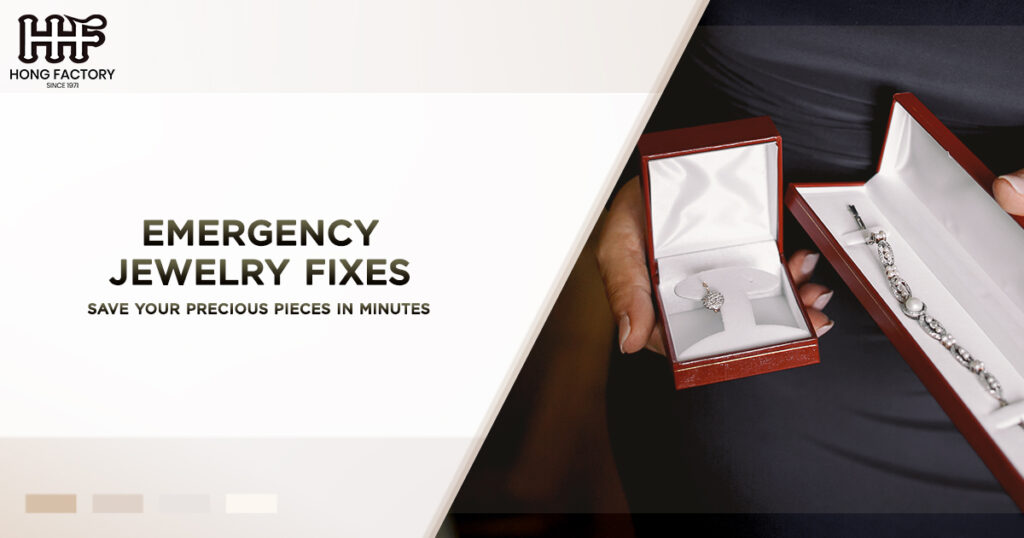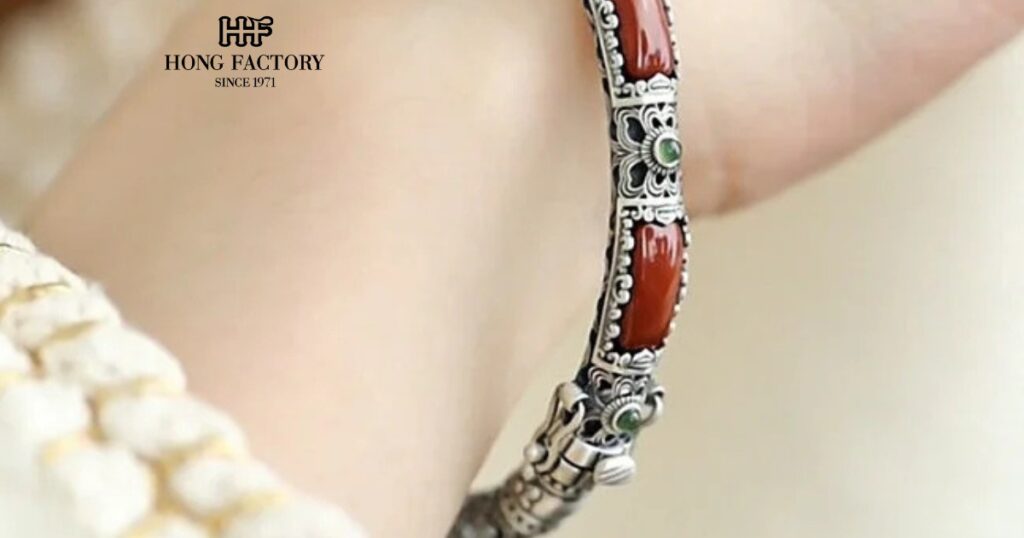
Jewelry can hold immense sentimental value, from heirlooms passed down through generations to modern pieces that mark significant life events. However, accidents happen, and jewelry can sometimes break or become damaged when we least expect it. Whether it’s a broken clasp, a lost stone, or tangled chains, knowing how to manage these emergencies can save your precious pieces and spare you from costly repairs. In this guide, we’ll explore simple solutions for common jewelry emergencies, offering quick repairs, jewelry maintenance tips, and DIY fixes that you can implement in minutes.
Understanding Common Jewelry Emergencies
Before diving into solutions, it’s essential to recognize the most common jewelry issues that can arise. Familiarity with these problems will help you respond to emergencies effectively.
- Broken Clasps
Clasps are often the weakest link in a necklace or bracelet. They can wear out over time or break unexpectedly, leaving you unable to wear your favorite pieces.
- Loose Stones
Rings and earrings can sometimes lose their stones due to wear and tear or rough handling. This can be particularly concerning if the stone is significant or valuable.
- Tangled Chains
Chains can easily become tangled when stored improperly or when worn alongside other pieces. Untangling can be frustrating and time-consuming.
- Broken Chains
Whether due to a snag or excessive force, chains can break, leaving your necklace or bracelet inoperable.
- Scratched or Dull Surfaces
Jewelry can become scratched or dull after prolonged use, diminishing its appeal and shine.
- Mismatched or Lost Earrings
It’s not uncommon to misplace one earring of a pair. Having a solution for mismatched or lost earrings can help you preserve your look.
Quick Repairs for Common Jewelry Emergencies
Let’s look at specific quick repairs and DIY fixes for these jewelry emergencies, ensuring you can keep wearing your favorite items without delay.
1. Repairing Broken Clasps
What You’ll Need : Replacement clasp, pliers.
Steps
– Identify the Type of Clasp : Determine whether it’s a spring clasp, lobster clasp, or toggle clasp.
– Remove the Old Clasp : Using pliers, gently open the jump ring that attaches the clasp to the chain. Remove the broken clasp.
– Attach the New Clasp : Thread the new clasp onto the jump ring, then use pliers to close the jump ring securely.
Pro Tip : Keep a selection of replacement clasps on hand for quick repairs, especially if you wear jewelry frequently.
2. Replacing Loose Stones
What You’ll Need : Super glue or gem adhesive, toothpick or small applicator.
Steps :
– Assess the Damage : If the stone has simply come loose, you can often reattach it with adhesive.
– Apply Adhesive : Use a toothpick or small applicator to carefully apply a tiny amount of adhesive to the setting.
– Reinsert the Stone : Place the stone back into its setting and hold it in place for a few seconds while the glue sets.
Pro Tip : For valuable stones or extensive damage, consider seeking professional help after your DIY fix.
3. Untangling Chains
What You’ll Need : A flat surface, a needle or pin, and a bit of patience.
Steps :
– Lay it Flat : Place the tangled chain on a flat surface under good lighting.
– Use a Needle or Pin : Gently use a needle or pin to separate the knots, working from the outside in.
– Be Patient : If the chain is very tangled, patience is key. Take your time to avoid damaging the links.
Pro Tip : To prevent tangling in the future, store chains separately or use a jewelry organizer with individual compartments.
4. Fixing Broken Chains
What You’ll Need : Jumprings, pliers, or a quick-link connector.
Steps :
– Assess the Break : Identify where the chain has broken.
– Open the Jumpring : Use pliers to open a jump ring and thread it through the broken ends of the chain.
– Close the Jumpring : Securely close the jump ring using pliers. If you prefer a cleaner option, a quick-link connector can be used for a similar effect.
Pro Tip : Investing in a jewelry repair kit can provide you with essential tools for quick fixes, making repairs easier.
5. Polishing Dull or Scratched Jewelry
What You’ll Need : Jewelry cleaning cloth, mild soap, and water.
Steps :
– Prepare a Cleaning Solution : Mix a few drops of mild soap in warm water.
– Soak and Clean : Dip a soft cloth in the solution and gently rub the surface of the jewelry to remove dirt and restore shine.
– Dry Thoroughly : Ensure the jewelry is thoroughly dried with a clean, soft cloth to avoid tarnishing.
Pro Tip : For silver jewelry, a specialized silver polish can help remove tarnish effectively.
6. Dealing with Mismatched or Lost Earrings
What You’ll Need : Earring backs (if applicable), matching piece (if available).
Steps :
– Find a Temporary Replacement : If a matching piece is not available, consider wearing a similar or complementary earring in place of the lost one.
– Replace the Back : If you’ve simply lost the back of an earring, replace it with a spare back that fits securely.
Pro Tip : Store earrings in pairs and consider using individual bags or a dedicated jewelry box to keep track of them.
Jewelry Maintenance Tips
Preventative measures can help you avoid emergencies in the first place. Here are some essentialDIY fixes tips to keep your pieces in great condition.
- Proper Storage
Store your jewelry properly to prevent tangling and damage. Use a jewelry box with compartments, soft pouches, or specialized storage solutions that keep chains separated.
- Regular Cleaning
Make it a point to clean your jewelry regularly. This not only preserves its shine but also allows you to spot potential issues, such as loose stones or worn clasps.
- Avoid Harsh Chemicals
Keep your jewelry away from harsh chemicals and cleaning products, which can tarnish or damage the metal and stones.
- Remove Before Activities
Always remove your jewelry before engaging in activities such as exercising, swimming, or cleaning. This will help prevent accidental damage.
- Schedule Professional Maintenance
For high-value items or sentimental pieces, consider scheduling regular check-ups with a professional jeweler. They can inspect for loose stones, worn clasps, and recommend necessary repairs.
Conclusion
Jewelry emergencies can happen to anyone, but knowing how to respond quickly can save your precious pieces and keep them looking stunning. From quick repairs and DIY fixes to essential maintenance tips, this guide equips you with the tools and knowledge needed to manage and prevent jewelry-related crises. By implementing these strategies, you can enjoy your favorite pieces with confidence, knowing that you’re prepared for whatever happens. So, the next time you face a jewelry emergency, remember these simple solutions, and you’ll be back to wearing your treasured items in no time!


